
Context
We were asked to improve the retention and monthly activation of already registered users on a fashion social network. The application value proposal already was rewarding with cash the users when they assisted to convert some sales between users, but either the feedback or the difficulty level of this not intended gamification not being successful.
The hypothesis
Gamifying the whole experience, would not only improve the retention and activation, but also would improve the comprehension of the app while making it more enjoyable.
At the same time, the same process of studying how to gamify the experience would return valuable learnings to the company about what emotions the experience was driving to the user.
As argued in the book Emotional Design, Don Norman, UX pioneer & co-founder Nielsen-Norman group:
“Our emotions do play a role in how we experience a product”
Sometimes is inherent to an app or service, sometimes is an add-on to improve the experience and therefore certain metrics.
From the UX/UI perspective can be expressed as the usage of emotions through motivational designs.
A rational analysis of the emotions
In order to design the game experience, I decided to follow a rational method to discover what emotions was the application stimulating, and if it was “fun” and hooking.
Yu-kai Chou is an Author and International Keynote Speaker on Gamification and Behavioral Design. He is the Original Creator of the Octalysis Framework, and the author of Actionable Gamification: Beyond Points, Badges, and Leaderboards.
He proposes a method to analyse and understand what drives and emotions a particular platform stimulates, and how to improve them in every stage:
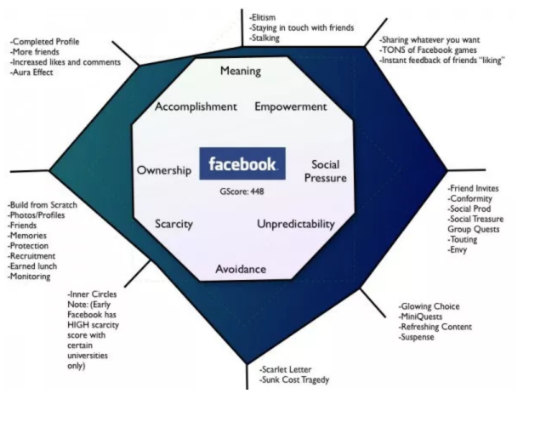
Brief explanation of the process
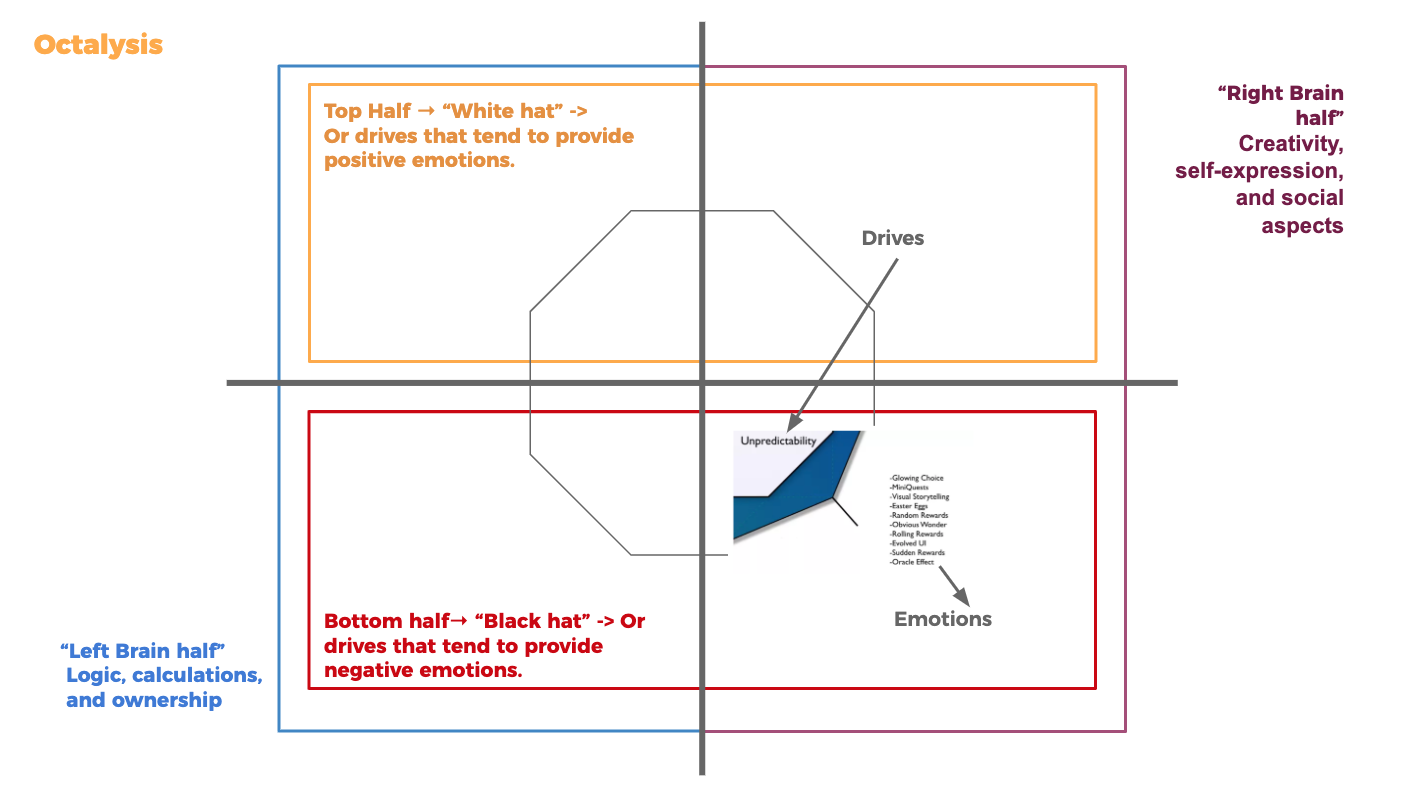
The analysis made offered these results:
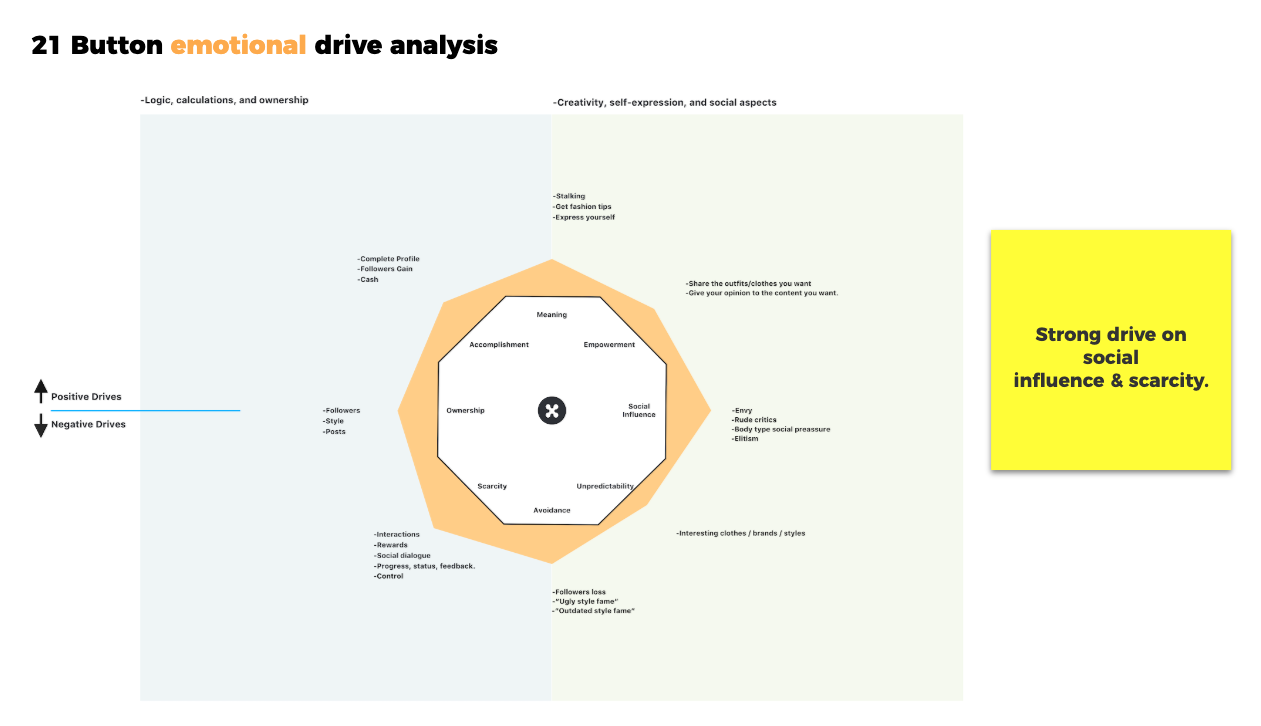
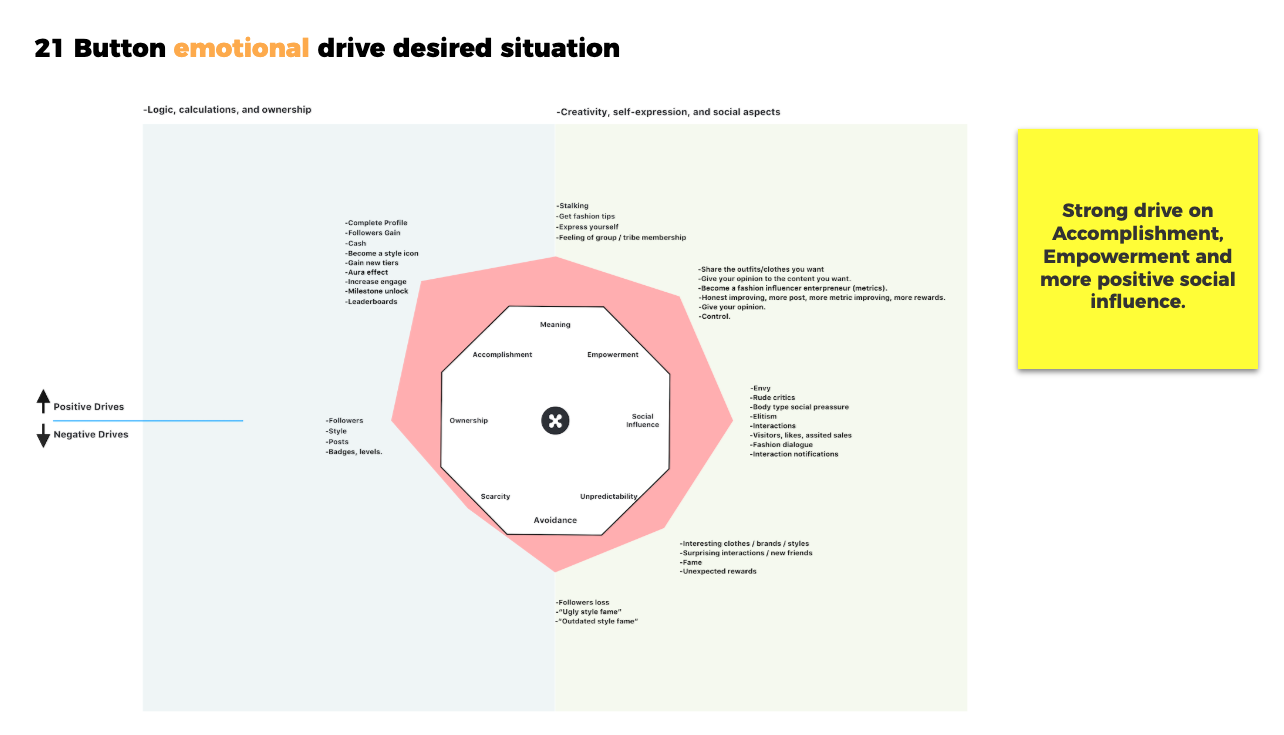
After the analysis we discovered that as a social network and in order the improve the fun, this emotional core drives had to be better stimulated:
- Improving Accomplishment drives.
- Improving Empowerment drives.
- Improving Social influence drives.
From the psychological need to the UI
After identifying the drives that were weak, a research was done in order to identify what elements should compose our gamified experience.
In the very basic level, every gamified experience is composed of the following 5 elements.





After defining the basic framework, a research was done to establish which game elements could assist to created a game centered experience.
| Psychological needs game design element cheat sheet. | ||
|---|---|---|
| Psychological need |
Mechanism |
Game design element |
| Need for competence, influence, recognition | Granular feedback | Experience points, redeemable points, or reputation points & Notifications |
| Need for competence, influence, recognition | Sustained feedback | Performance graphs / Notifications |
| Need for competence, influence, recognition | Cumulative feedback | Badges, Leaderboards |
| Need for autonomy (decision freedom) | Choices | Avatars |
| Need for autonomy (task meaningfulness) | Narrative engagement | Meaningful stories |
| Need for social relatedness | Sense of relevance | Teammates / Social dialogue |
Sketching the game
The foundations of this Gamification will be the following:
- Goal:
Discover trends and influencer looks while gaining reputation on the fashion community.
- Motivation:
Intrinsic: Sense of achievement, progress and recognition inside the community.
Extrinsic: Cash, tiers and reputation points. - Feedback
Tier avatar: Meaningfulness, cumulative feedback.
Reputation points: Recognition, granular feedback.
Metrics / Progress bars: Influence, competence, sustained feedback.
Notifications: Social dialogue and granular feedback. - Rules
Repetitive and continuous actions users need to do and they are tightly integrated with the main offering of the product.
- Rewards
Cash.
Badges, tiers, reputation points, prizes.
So the game centered experience will offer to become an influencing member of a fashion community while earning reputation and cash.
Each user will start in a low tier and depending of some completed tasks points will be gained and new features will be unlocked.
The MVP will have 4 different tiers that will classify the user and give feedback in every place of the app where the avatar appears.

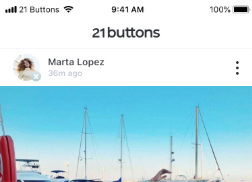
The rules and feedback of the task completed will be visible from a new section that will explain and take account of everything done, as well as informing and previewing new tiers to be achieved.
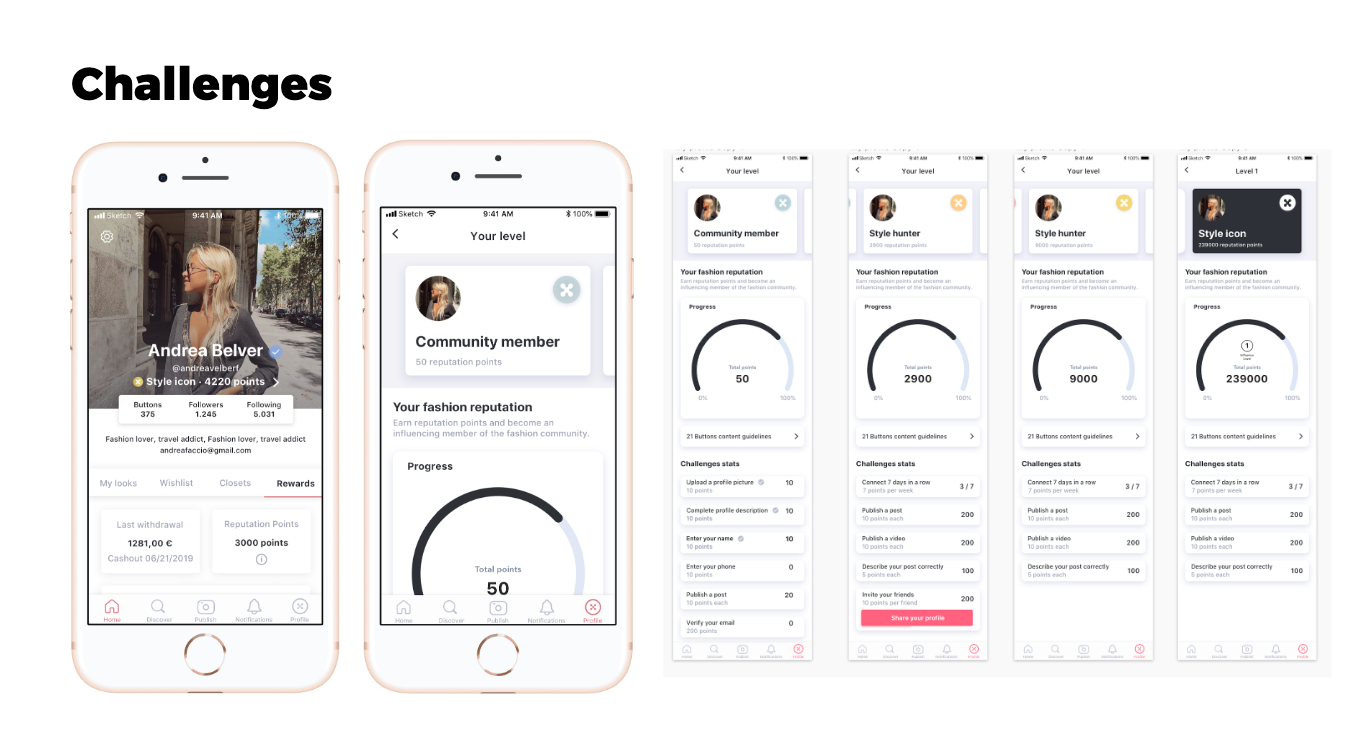
Also progress will be notified in the notifications page, that moves from a hidden place of the app to the main bottom navigation. Social interaction notifications also will be improved and will have a much more important paper on the app.
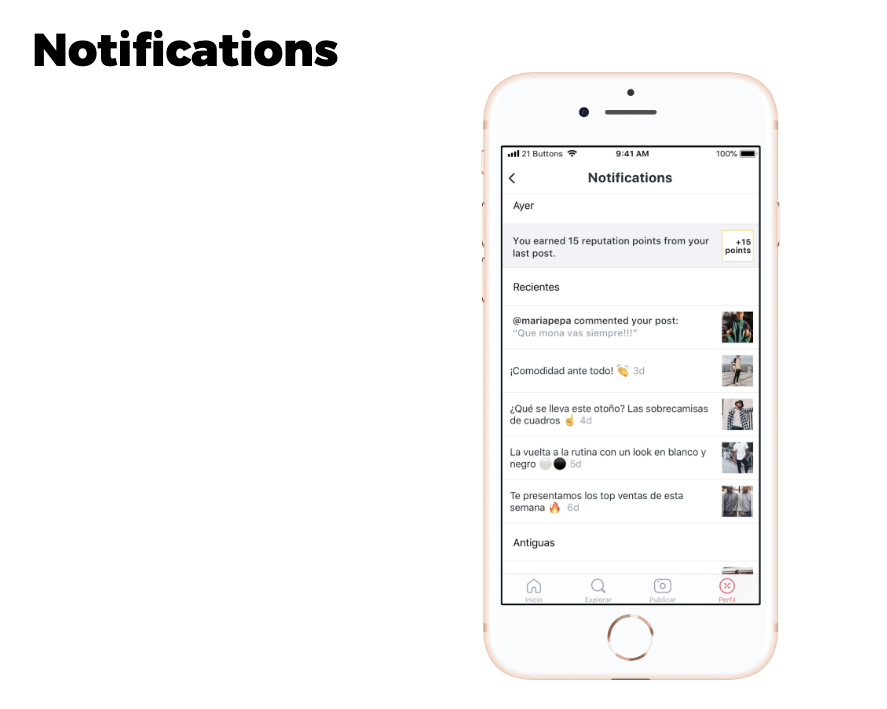
The old rewards screen, that was hidden, now has a prominent space on the profile page, it will combine the cash generated and the reputation points accumulated. Here the cash can be withdrawn as well as redeem prizes through the reputation points, such as material benefits or unlocking features.
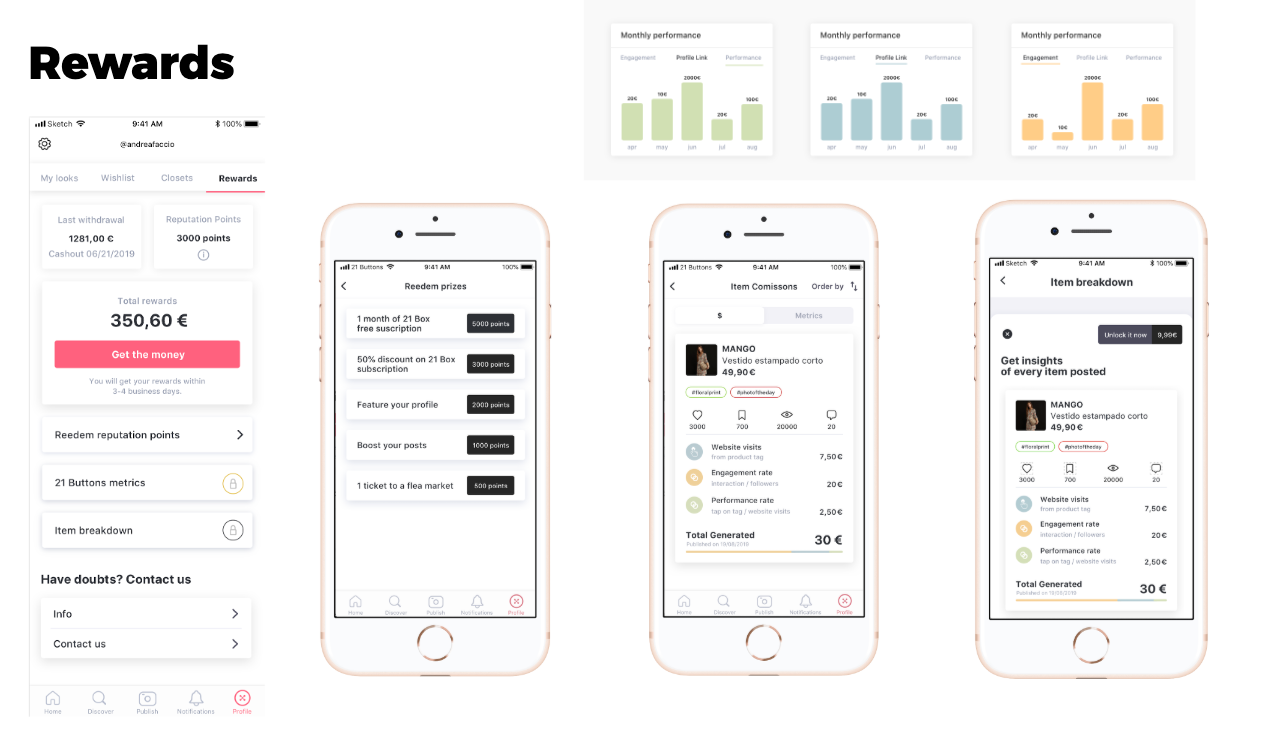
A set of other features are recommended in case the MVP is successful.
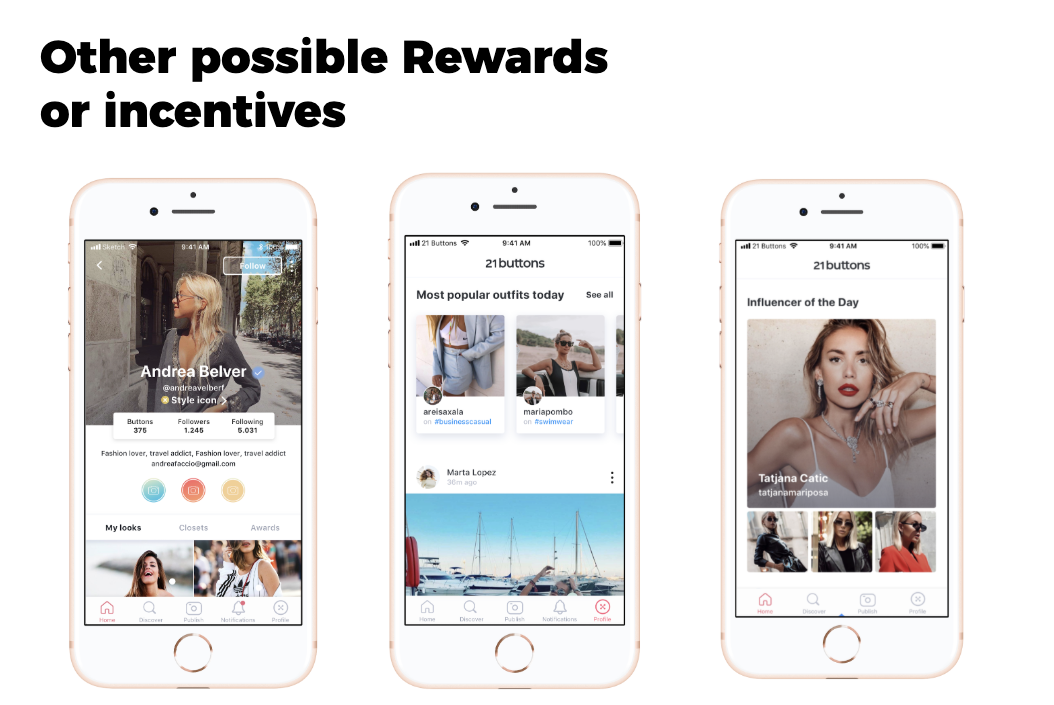
Next steps
As a very summarised version of this work, I cannot explain with detail all the task and the calculations to develop a nice difficulty curve and how content should be moderated and curated.
So far the research done in order to develop the gamification process has succeeded discovering tons of insights about emotions and flaws of the current system.
Hope you enjoyed this gamification development introduction case!